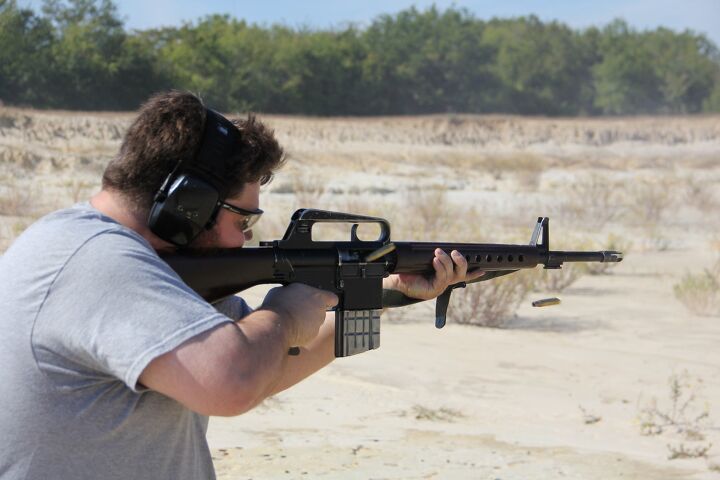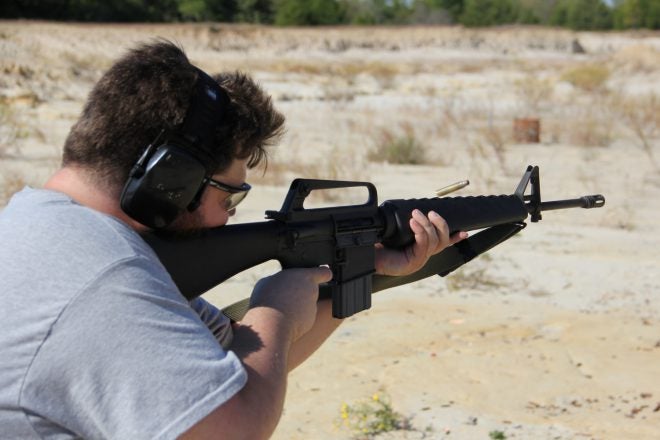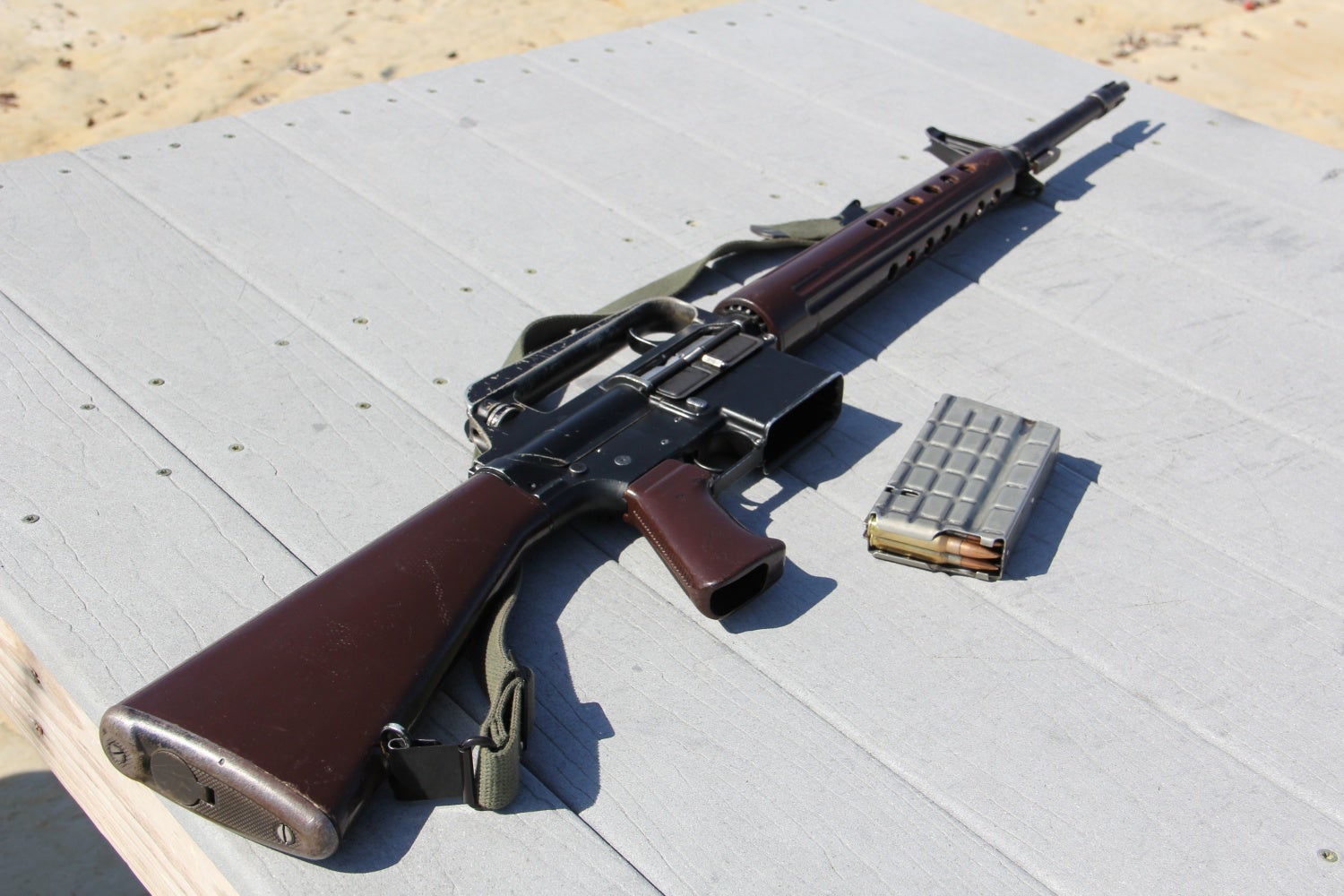Previously, we talked about the word “controllability”, and what it means in relation to the recoil and ergonomic characteristics of a firearm. If you haven’t already read that article, I recommend you click the link here and do so first, as this post will assume that you have. We discussed how a rifle – due to its ergonomic design and the skill of its shooter – may seem to be “controllable”, even if it produces recoil to an extreme degree and rate. What we didn’t talk about is the effect that terrain, fatigue, and other secondary factors have on rifle controllability, and how those factors fit in to a broader calculus on controllability thresholds for military automatic individual weapons.
Let’s take again the example of the Dutch-made AR-10. With a torrent of recoil channeled through a straight line stock, this weapon can be “controlled” when firing on flat, solid ground, by a skilled shooter who is strong and heavy enough. Yet, is that enough for the weapon’s fully automatic function to be militarily useful? Not exactly. Essentially, this control may only be achievable in ideal conditions. Take a shooter who, when well-rested and fed, can control the weapon on a square range with solid ground, and deny him any single piece of that equation (leave him hungry, or deny him sleep, or have him try to fire in the mud or in an awkward position), and he may lose control of such a challenging weapon as the AR-10. This changes the nature of our question further beyond the gunwriter’s “controllable or not?”: Now we need to ask “how often is the fully automatic fire usable in practical military situations?”
For the AR-10, the answer is “not very often”. I cannot imagine being able to control such a weapon even when simply firing downward into a trench, much less on slick ground, or when stopping suddenly after running. Simply, controlling a weapon like the 800 rounds per minute, seven-pound 7.62 Armalite is for me, only a stunt. It provides little to no useful military capability to the infantryman.
There is also the matter of the modern infantryman’s fighting kit. Unlike when these weapons are shot for fun by civilians in jeans and a t-shirt, militaries need their soldiers to be able to achieve fully automatic fire in their normal fighting gear. Can that same skilled shooter who tamed the AR-10 before do so again, but this time in full armor and ruck? It is doubtful!
In contrast, the AR-10’s younger, smaller brother, the AR-15 is quite handily controlled in many different situations. The rifle can be fired by a skilled shooter reasonably accurately on fully automatic while he is in his full gear, while moving, while pointing up or down, when the shooter is tired, physically spent, hungry, or when he is in an awkward position. The recoil doesn’t cause the shooter to want to slide backwards in mud very much, nor does the concussion of firing blur the shooter’s vision and completely dominate his concentration. In other words, the AR-15 can be used to do the same things as a submachine gun; it possesses militarily useful fully automatic capabilities even when its user is maneuvering over rough terrain. The AR-10 does not; control of that weapon is only possible in ideal conditions with a highly skilled shooter in my opinion, and its firing is so violent is precludes the shooter from doing anything but control the weapon, meaning no target acquisition or situational awareness at all is possible during firing.

Last time, I didn’t make it adequately clear: This is a stunt. At best, it provides only marginal tactical benefit.
So to truly evaluate the suitability of a weapon for fully automatic fire, we need more than just a YouTube video of someone managing to keep the muzzle level while letting it rip. Footage of this kind tells us very little about how militarily useful a weapon’s fully automatic fire may be. Instead, to truly determine how useful the automatic mode on a rifle is, we would need a course of fire where the weapon is fired by a regular infantryman in full gear at a variety of attitudes, in a variety of positions, and while standing on a variety of surfaces (e.g., mud). The soldier would need to be able to control a rifle while moving, or while having just run the better part of a mile or more. To be militarily useful, the rifle’s muzzle must stay down and on target not just on a square range, as a stunt, but when used by a fighting man in combat!
*It must be noted that we are talking about fully automatic fire for individual weapons – that is, assault rifles. Squad support weapons are used differently, and not everything said here may be applicable to them.
 Your Privacy Choices
Your Privacy Choices

